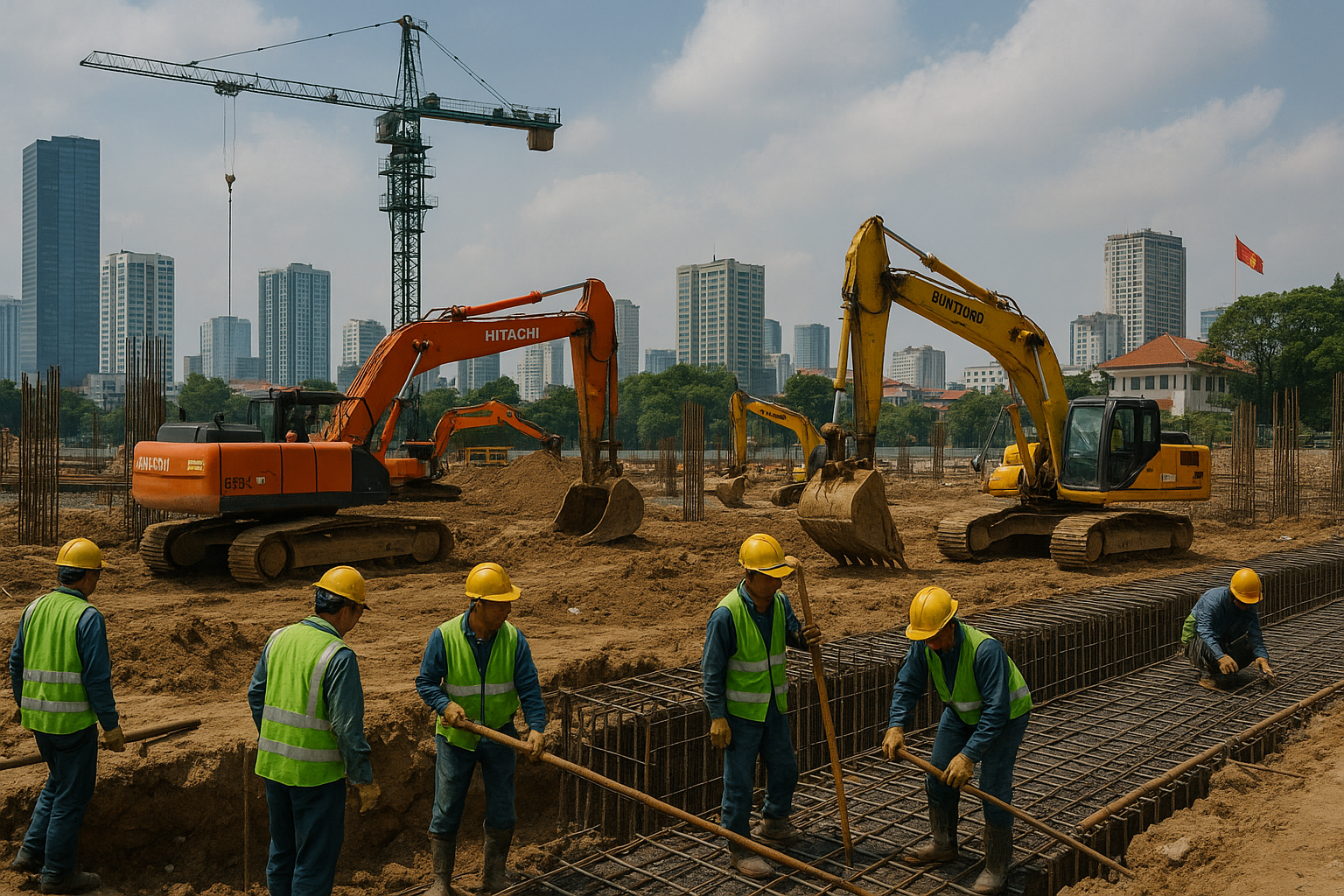Rebuilding Smart: Overhauling Vietnam’s Investment System for Growth and Sustainability
The World Bank's 2025 policy note urges Vietnam to overhaul its public investment system to boost efficiency, coordination, and climate resilience. Despite legal reforms, deeper structural changes are needed to align spending with national development and sustainability goals.

A landmark policy note published by the World Bank in April 2025, prepared in collaboration with key Vietnamese institutions including the Ministry of Planning and Investment (MPI), Ministry of Finance (MoF), Vietnam Chamber of Commerce and Industry (VCCI), and the Vietnam Logistics Business Association, delivers an urgent wake-up call for Vietnam’s public investment strategy. As the country eyes high-income status by 2045, the report emphasizes that public investment must not only increase in scale but also improve in efficiency, both allocative and operational. Despite decades of infrastructure expansion, Vietnam’s current public investment management (PIM) system is deeply flawed. Weak planning, bureaucratic silos, poor project preparation, and inadequate asset management prevent investments from delivering real value. While recent legal reforms, such as the 2024 amendments to the Public Investment Law (PIL), address some practical constraints, the note warns they are limited in scope and fail to address the systemic inefficiencies strangling Vietnam’s development momentum.
More Spending, Less Impact: A Dangerous Imbalance
Vietnam’s public investment has declined from 8% of GDP in 2011 to just 6.5% in 2023, at a time when the government estimates a steady 7.3% will be required annually to reach its 2045 targets. The infrastructure quality remains mediocre, ranking 77th out of 141 countries in the World Economic Forum’s Global Competitiveness Index. Expressway density is among the lowest in Asia, driving up transport costs and weakening foreign investment potential. Yet the report argues that the bigger problem isn’t the volume of investment, it’s the inefficiency. Projects suffer from chronic under-execution, with 23% of budgeted funds typically going unspent. Many large-scale infrastructure initiatives overrun costs by up to 100% and experience average delays of five years. For projects funded through official development assistance (ODA), disbursement rates are even worse, averaging around 40%. The causes are systemic: weak project appraisal, excessive procedural controls, underprepared feasibility studies, and budgeting that favors form over function.
Climate Urgency Meets Planning Paralysis
The note devotes special attention to climate change, a looming threat to Vietnam’s economic model. With more than 17 million people vulnerable in the Mekong Delta alone, the country faces rising sea levels, severe flooding, and infrastructure degradation. The World Bank estimates Vietnam will need $701 billion between 2022 and 2040 to finance its climate transition and resilience agenda, of which around 2.4% of GDP annually must come from public investment. Yet climate risks remain largely absent from public project appraisal, planning, and prioritization. While high-level commitments, such as net-zero by 2050, exist, they haven’t translated into investment decisions. Provincial governments, which execute 80% of capital spending, lack both the institutional tools and budget flexibility to assess climate risks or manage adaptation. Asset registries are outdated or nonexistent, further compounding the problem. Meanwhile, funding for disaster protection remains a token 0.05% of GDP, despite recent typhoons costing $475 million in infrastructure damage in a single year.
Fractured Governance and the Limits of Decentralization
One of the most striking observations in the report is the problematic structure of Vietnam’s fiscal decentralization. Provinces now account for roughly 80% of public investment, one of the highest levels globally, and far above the 39.5% international average for unitary states. While decentralization has enabled local development, it has also led to fragmentation, duplication, and missed opportunities for regional coordination. Provinces often pursue narrow self-interest, resulting in overbuilt airports, redundant roads, and conflicting water management strategies. Legal barriers, such as Article 9.9 of the State Budget Law, prohibit provinces from investing outside their administrative boundaries, severely constraining multi-provincial or regional projects. While mechanisms like the National Targeted Programs (NTPs) and Public Investment Programs (PIPs) were designed to promote coordination, they have been hamstrung by complexity, poor oversight, and weak institutional authority. The Mekong Delta’s experience is emblematic: despite promises of $2 billion in co-financed infrastructure, agreement on priorities took four years and implementation remains delayed.
Charting a Smarter Future: Strategic Overhaul Needed
Although the 2024 amendments to the Public Investment Law made progress by simplifying approval chains, allowing land clearance as separate projects, and adjusting project thresholds, deeper structural reforms are still lacking. There is no clear provision for integrating intangible assets like software into investment accounts. The law does not provide for a separate category of “investment preparatory projects” for complex mega-projects. Crucially, the PIL continues to misalign with the State Budget Law’s rolling Medium-Term Expenditure Framework, leaving capital and current expenditures poorly coordinated. The World Bank proposes a comprehensive strategy to realign Vietnam’s investment system with its development ambitions. This includes adopting a unified, results-based program budgeting framework, rebalancing fiscal powers between central and provincial governments, and strengthening the Public Investment Program (PIP) mechanism to support targeted, multi-province infrastructure. For ODA projects, the bank urges the elimination of redundant approval stages and clearer rules for using performance-based financing. In short, Vietnam must pivot from a system focused on compliance to one centered on outcomes. If it does, the rewards will be immense: more efficient spending, faster project delivery, greater climate resilience, and a stronger foundation for equitable and sustained economic growth. If it doesn’t, the risk is stagnation, where money is spent, but development goals remain out of reach.
- FIRST PUBLISHED IN:
- Devdiscourse
ALSO READ
Vietnam’s Offshore Wind Plan: Balancing Clean Energy Growth with Nature and Livelihoods
Vietnam Secures Helicopter Deal with Lockheed Martin Marking Strategic Shift
Unlocking Prosperity: How Vietnam Can Become a High-Income Country by 2045
Devastating Floods Hit Central Vietnam, Leaving Devastation in Wake
Indian Navy Ships Dock in Vietnam to Boost Bilateral Maritime Cooperation










